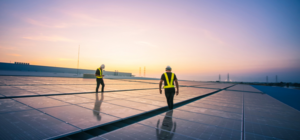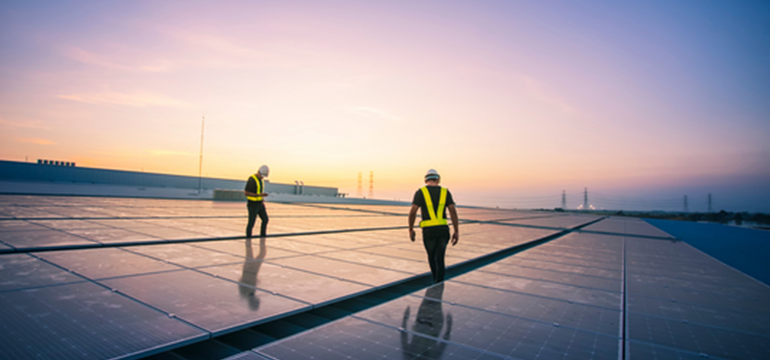We all know that the world’s dependence on fossil fuels needs to come to an end, and it needs to happen soon. It’s not just because of rising CO2 levels – the use of coal and oil creates other problems for humanity too, like particulate pollution and resource scarcity (by depleting non-renewable sources of power). The use of fossil fuels is also linked to energy poverty – i.e. power is relatively expensive for the masses, especially in poor and middle-income countries. All of this is easily solved by the use of renewables like solar, wind, nuclear and hydroelectric power. In most parts of the world today, the per-kilowatt cost of solar power is on par with, or lower than, power generated by burning coal.
The massive surge in demand for renewable energy in the 21st century has led to rapid innovation in the field of photovoltaic energy panels. The underlying technology has remained the same – solar panels continue to be made with silicon. However, there have been two recent developments in the industry:
- Perovskites : A perovskite is a unique crystal structure that helps the underlying solar panel absorb more wavelengths of light from the sun. This means, essentially, that it’s an efficiency booster. A typical commercial silicon panel has an efficiency of 20 to 22%, and adding a layer of perovskite can increase this all the way to 32.5%. This number was achieved in a lab in Germany in late 2022, with a silicon-perovskite tandem cell. In practical conditions, like a solar power plant or the roof of your home, this number could be slightly lower.The current challenge for perovskites is their lifespan. The crystal structure is rather delicate and can degrade with heat and moisture. Some simply collapse within hours while others can survive for months. Scientists are researching ways to stabilize the perovskite structure and ensure that it lasts at least as long as the silicon panel (25 or more years).
If they succeed, it may soon be possible to retroactively coat existing photovoltaic energy panels with a perovskite layer, boosting their power output for a marginal fee. A jump from 20% to 30% is essentially a 50% increase in a solar power plant’s total output.
- Transparent solar : This refers, as you might have guessed, to turning windows and other glass surfaces into solar power generators without impacting their transparency. A US based solar window company, Ubiquitous Energy, said they will begin mass installation of transparent solar this year. The technology is promising – there are billions of glass windows all over the world, it’s quite easy to install, and it requires nearly zero maintenance.How do solar windows work? They convert near-infrared and ultraviolet light to electricity, but leave the visible spectrum alone, thus the person working behind the glass is not affected. They’re most useful in crowded cities with tall buildings where there is lack of space to install traditional solar; the entire building can be coated in transparent solar, letting it function like one giant photovoltaic energy panel.
When transparent solar was first developed by Michigan State University in 2014, it had a poor efficiency rating – just 1%. Now, these panels have hit 7.2%. While this is rather low compared to the 20-22% found in ordinary solar panels, the potential is massive when you consider the surface area of windows: 5 to 7 billion square meters in the US alone.

Solar energy is no longer a niche or experimental technology used by spacecraft – it has fully entered the mainstream. India alone had 73 GW of installed solar capacity at the end of 2023, with a total renewable energy target of 500 GW by 2030 (much of this is expected to come from solar, which is the fastest growing source of renewable energy). New developments like perovskites and transparent PV are a much-needed source of relief, assuring us that we will soon make our world a cleaner place to live in.




